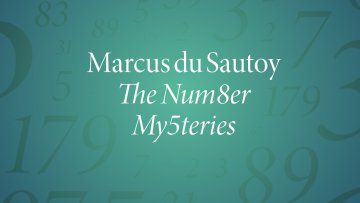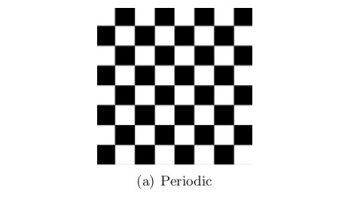Our Oxford Mathematics Public Lectures have been a huge success both in Oxford and London, and across the world through our live broadcasts. Speakers such as Roger Penrose, Stephen Hawking and Hannah Fry have shared the pleasures and challenges of their subject while not downplaying its most significant element, namely the maths. But this is maths for the curious. And all of us can be curious.
Nonparametric inference of atomic network structures
Abstract
Many real-world networks contain small recurring connectivity patterns also known as network motifs. Although network motifs are widely considered to be important structural features of networks that are closely connected to their function methods for characterizing and modelling the local connectivity structure of complex networks remain underdeveloped. In this talk, we will present a non-parametric approach that is based on generative models in which networks are generated by adding not only single edges but also but also copies of larger subgraphs such as triangles to the graph. We show that such models can be formulated in terms of latent states that correspond to subgraph decompositions of the network and derive analytic expressions for the likelihood of such models. Following a Bayesian approach, we present a nonparametric prior for model parameters. Solving the resulting inference problem results in a principled approach for identifying atomic connectivity patterns of networks that do not only identify statistically significant connectivity patterns but also produces a decomposition of the network into such atomic substructures. We tested the presented approach on simulated data for which the algorithm recovers the latent state to a high degree of accuracy. In the case of empirical networks, the method identifies concise sets atomic subgraphs from within thousands of candidates that are plausible and include known atomic substructures.
16:00
Cosmological correlators and polytopes
Abstract
Following recent papers by Nima Arkani-Hamed.
Quasi-optimal and pressure robust discretizations of the Stokes equations.
Abstract
ABSTRACT
We approximate the solution of the stationary Stokes equations with various conforming and nonconforming inf-sup stable pairs of finite element spaces on simplicial meshes. Based on each pair, we design a discretization that is quasi-optimal and pressure robust, in the sense that the velocity H^1-error is proportional to the best H^1-error to the analytical velocity. This shows that such a property can be achieved without using conforming and divergence-free pairs. We bound also the pressure L^2-error, only in terms of the best approximation errors to the analytical velocity and the analytical pressure. Our construction can be summarized as follows. First, a linear operator acts on discrete velocity test functions, before the application of the load functional, and maps the discrete kernel into the analytical one.
Second, in order to enforce consistency, we possibly employ a new augmented Lagrangian formulation, inspired by Discontinuous Galerkin methods.
Ricci Flow in Milnor Frames
Abstract
In this talk, we are going to talk about the Type I singularity on 4-dimensional manifolds foliated by homogeneous S3 evolving under the Ricci
flow. We review the study on rotationally symmetric manifolds done by Angenent and Isenberg as well as by Isenberg, Knopf and Sesum. In the latter, a global frame for the tangent bundle, called the Milnor frame, was used to set up the problem. We shall look at the symmetries of the manifold, derived from Lie groups and its ansatz metrics, and this global tangent bundle frame developed by Milnor and Bianchi. Numerical simulations of the Ricci flow on these manifolds are done, following the work by Garfinkle and Isenberg, providing insight and conjectures for the main problem. Some analytic results will be proven for the manifolds S1×S3 and S4 using maximum principles from parabolic PDE theory and some sufficiency conditions for a neckpinch singularity will be provided. Finally, a problem from general relativity with similar metric symmetries but endowed on a manifold with differenttopology, the Taub-Bolt and Taub-NUT metrics, will be discussed.
Homogenization theory aims to understand the properties of materials with complicated microstructures, such as those arising from flaws in a manufacturing process or from randomly deposited impurities. The goal is to identify an effective model that provides an accurate approximation of the original material. Oxford Mathematician Benjamin Fehrman discusses his research.
"The practical considerations for identifying a simplified model are twofold:




